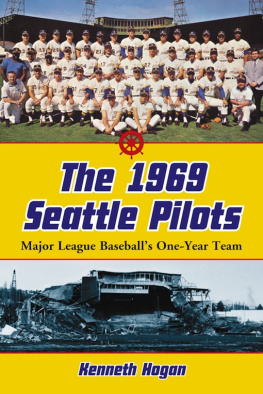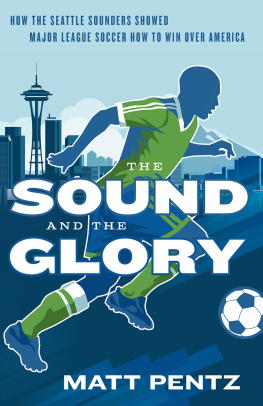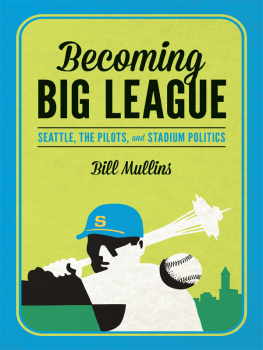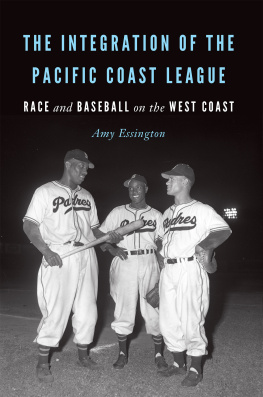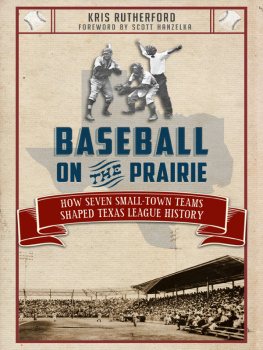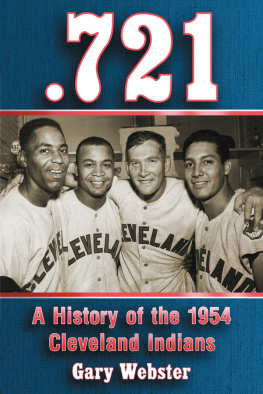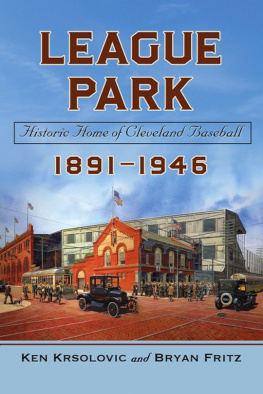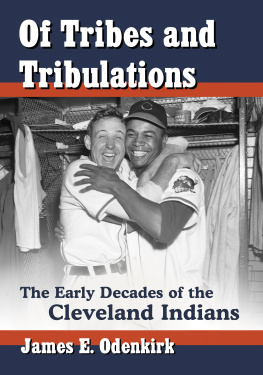
THE 1969 SEATTLE PILOTS
Major League Baseballs One-Year Team
Kenneth Hogan

McFarland & Company, Inc., Publishers
Jefferson, North Carolina, and London
LIBRARY OF CONGRESS CATALOGUING DATA ARE AVAILABLE
BRITISH LIBRARY CATALOGUING DATA ARE AVAILABLE
e-ISBN: 978-1-4766-0471-8
2007 Kenneth Hogan. All rights reserved
No part of this book may be reproduced or transmitted in any form or by any means, electronic or mechanical, including photocopying or recording, or by any information storage and retrieval system, without permission in writing from the publisher.
On the cover: (top) The 1969 team assembled on the eld at Sicks Stadium (photograph by Bob Stearns);(bottom) Sicks Stadium after its demolition in 1979 (Rainier Valley Historical Society)
McFarland & Company, Inc., Publishers
Box 611, Jefferson, North Carolina 28640
www.mcfarlandpub.com
Preface
On April 8, 1969, there was a buzz around Seattle. This old, yet up-and-coming town had never been considered one of Americas big or great cities. No, it was not New York, or Washington, or Boston. It was not on the level of Cleveland, Baltimore, Detroit, or Minneapolis either. Even Los Angeles and Oakland were considered to be superior by those on the West Coast. But things would change today.
Twelve hundred miles away, with a rst-inning pitch from the Angels Jim McGlothlin to Tommy Harper, Seattle would join the big leagues. Any hint of an inferiority complex would be gone: Seattle was major league. Nobody or nothing could take that away, or could they?
Three days later, on April 11, Major League Baseball would nally be played in Seattle. Thousands of fans would meet their team at the airport and then later cheer them on at Sicks Stadium. Enthusiasm was high for this team that none of the locals had ever seen but who they now heartily embraced. What no one could have known was that their beloved team of rejects, retreads, rookies, and the rehabbing would be gone in less than a year, turned into a footnote in baseball history. How could a dream that took so long to materialize come completely crashing down so quickly?
As a boy growing up in America I was like most other young boys of the 60s and 70s. Baseball was never far from my mind. Along with playing it, watching it and talking (arguing) about it, I possessed thousands of baseball cards. Along with the Yankees, the All-Stars, and the In Action cards were a multitude more of less importance to me. Among those, however, were a few cards that caught my attention and interest. I knew every team, every stadium, every uniform and variation, or so I thought. Who were these mysterious Pilots? What was a Pilot? But there is no team in Seattle. And what were these strange uniforms about? So began my interest in the Pilots, though I was a Brooklyn kid who had never even left New York.
The biggest obstacle in writing about the Pilots is researching them. Although 1969 is not that long ago in relative history there is not a wealth of information out there. They were in a small market, in last place, and were gone in a year. There wasnt much media coverage in that era to begin with. Much of what had been written and photographed is gone. Statistical information can be found on just about anything and so, too, the Pilots. But a story about a team needs more than numbers. A face needs to be put on the team, the reader needs to know what it felt like to be there and why things happened. For that information I went right to the source. Sixteen gentlemen helped me with this project with their recollections, information, and opinions. The fourteen players and two staff members who I spoke to turned reference material and stats into a fascinating story, a journey through a long, tough season until they all were forced to move on.
This book will take you through that season starting from the earliest attempts to bring baseball to the Pacic Northwest to the ultimate achievement of joining the major leagues. You will experience what the players experienced from spring training 1969 to spring training 1970. It will then lead you to all of the attempts to save the franchise to the ultimate move and lingering effects.
Chapter 1
Early Seattle Baseball
The history of the Seattle Pilots does not start in 1969. The seed was planted years prior. No story about the Pilots would be complete without rst describing Seattles rich baseball past. For baseball was not new to Seattle and the Northwest in 1969.
The national pastime was brought west at least as early as the Civil War. Seattle of the late 1800s was a bustling port city lled with laborers, wide-eyed opportunists, tough characters, and transients. Miners, shermen, prospectors, and shop owners made up Seattles very rst local baseball teams. The city was growing by leaps and bounds but the workers of Seattle needed some form of recreational activity other than saloons and burlesque theaters. As with most early frontier towns the development of baseball was strongly tied to industry. Many of these amateur and semi-professional teams were sponsored by local businesses. These companies employed enough workers to eld a team or two. Other teams were organized by churches, trade associations, and social organizations. Matches, as they were originally called, were played primarily on Sundays and an occasional Saturday. There were no laws preventing Sunday play in this rugged outpost town. Actually, there probably werent many laws at all. Although professional leagues would capture the hearts (and wallets) of local fans, these industry teams would continue to play on into the 20th century before mostly dying out prior to World War II.
Professional baseball came to Seattle on May 24, 1890. Approximately 1,200 spectators watched the Seattles beat the Spokanes 11 to 8. The city was hooked and became part of the professional circuit the following month when their own team joined the National Association of Baseball Clubs. The Reds, as Seattles rst professional team was known, played in the Pacic Northwest League. They were so named due to their scarlet caps and baseball socks. The league consisted of just three other teams, Tacoma, Spokane, and Portland. Seattle did not have to wait long to win its rst professional championship: The team captured the crown in 1892 (were still waiting for the Mariners). Unfortunately, the league quickly became nancially unstable and folded after that season. Seattleites would have to settle for their amateurs again until 1898.
Daniel (D.E.) Dugdale was a former Major League ballplayer, manager, and general manager. The portly catcher was passing through Seattle on his way to Alaska where he had a business endeavor, he was looking to strike it rich in the Klondike Gold Rush. He never made it beyond Seattle. Dugdale was taken by the natural beauty of the Puget Sound area and the opportunities that abounded in the city. There was no need to travel to Alaska; he would stake his claim here. Once he had settled, D.E., as he was known, was surprised to learn of the lack of a professional baseball team and the fate of the Pacic Northwest League. The shrewd business side of Dugdale saw an even greater opportunity in doing something that he loved. He set about to establish another professional league for the area. With nancial assistance from friends back in Detroit, Dugdale formed the Northwestern League in 1898. The Seattle team would once again compete against teams from across the Northwest. The city of Seattle is named after an Indian chief, Sealth; with this in mind Dugdale named his rst team the Braves. After ve successful seasons the still-fresh league would face its rst major challenge. The Pacic Coast League was expanding and saw a big prot to be made in Seattle, Dugdales territory. Dugdale and his backers refused to budge as they would not sell their team. Why should they? They had done all the work establishing Seattle as a professional ball town and the PCL was an outlaw league anyway. Because the PCL had refused to join the National Association of Baseball Clubs it was viewed as inferior and illegal by the rest of the official leagues. This did not seem to bother the PCL, who promptly ran the Northwestern League right out of business. For one lone season, 1903, Seattle had two professional baseball teams. Dugdale and his partners tried to convince the local fans that his team was the true Seattle team and better entertainment. This was a tough sell even with local sentiment on his side. The PCL had more money than the NWL and raided their best players. As the season wore on, attendance became more lopsided until it was evident that the city could not support two teams and that the Braves would lose out to the PCLs Siwashes. During the off-season of 190304 some visiting teams of the NWL informed Dugdale that they would not be making the trip to Seattle next season due to the lack of fans. (Even back then visiting teams got a portion of the receipts in every town they played in.) This sealed his teams fate and Dugdale sold the Braves to the PCLs Siwashes. Although the Siwashes did not need to purchase the Braves it made sense for them to do it just to eliminate the competition. As for Dugdale himself, he would stay involved in Seattle baseball as a player, manager, official, and owner for the next 30 years. Indeed, he is considered to be the father of Seattle baseball.
Next page
